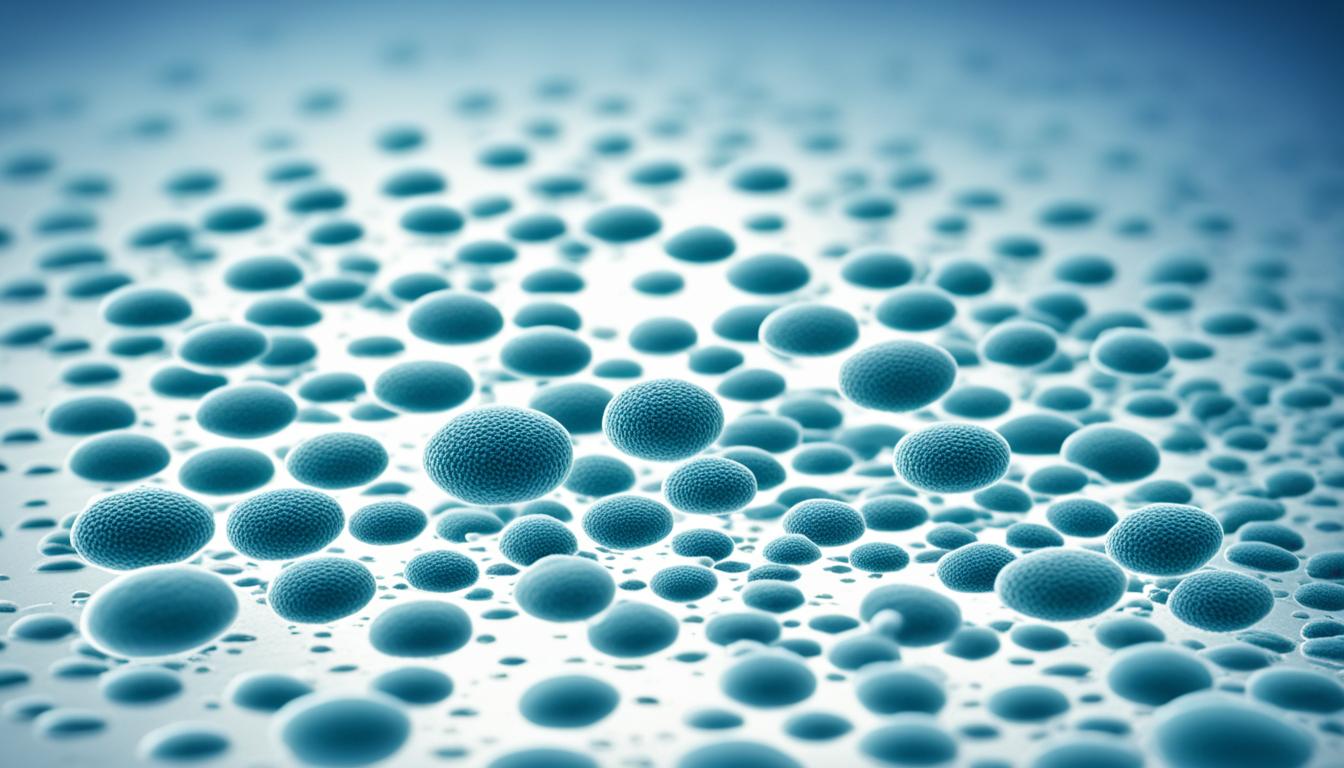Oligospermia is when a man has few sperm cells in his semen. This can lead to infertility. Many things can cause low sperm count, such as genetic issues, infections, or hormonal problems. Lifestyle choices like alcohol, smoking, and stress also play a role. If you’re struggling to have a baby, or if you have other concerns, see a doctor.
Key Takeaways:
- Low sperm count can make it hard for men to have kids.
- Causes include genetic issues, infections, and lifestyle choices.
- Not being able to conceive is a key symptom of this condition.
- If you’ve tried for a year or more without success, seek medical advice.
- Stem cell therapy could offer hope for improving sperm count and fertility.
Diagnosing Low Sperm Count
A man worried about his low sperm count needs a thorough checkup. A doctor will first ask for medical history and do a physical exam. This helps find possible reasons for the low sperm count.
After the exam, more tests might be needed. These include:
- Semen analysis: A test to look at sperm count and how well they work. It tells us about the sperm’s quality and quantity.
- Urinalysis: This test can find retrograde ejaculation. It’s when semen goes into the bladder instead of out of the body.
- Imaging studies of the reproductive organs: Things like ultrasounds and MRIs can show the reproductive organs. They can check for any problems with their structure.
- Endocrine system tests: Hormones are crucial for making sperm. Blood tests check hormone levels and see if there’s any imbalance that might be causing the low count.
- Genetic disease testing: Sometimes, checking your genes can reveal issues that harm sperm making.
After diagnosing low sperm count, the next step is treating it. The cure depends on what caused the low count. Some things that could help are to quit smoking, cut down on alcohol, or maintain a healthy weight. In some cases, surgery might be needed. Medicines, hormone therapy, or talking to a specialist about any sexual problems could also be part of the treatment. If improving sperm count is not possible, there are methods to have a child with the help of science. These include in vitro fertilization (IVF) or intracytoplasmic sperm injection (ICSI).
Overview of Diagnostic Tests for Low Sperm Count
| Test | Purpose |
|---|---|
| Semen analysis | Evaluates sperm count and function |
| Urinalysis | Detects retrograde ejaculation |
| Imaging studies of the reproductive organs | Visualizes the reproductive organs for structural abnormalities |
| Endocrine system tests | Evaluates hormone levels |
| Genetic disease testing | Identifies underlying genetic conditions or abnormalities |
Stem Cell Therapy for Low Sperm Count
Scientists are excited about the potential for stem cell therapy to help with low sperm count and male fertility issues. Stem cells can turn into sperm cells, boosting both quantity and quality.
This treatment starts by taking stem cells from the patient’s body. They might come from bone marrow or fat tissue. Once collected, the cells are injected into the testicles or seminal vesicles. Their job is to repair and replace cells that create sperm.
Using stem cell therapy for low sperm count is a new field. But early tests are showing hope, especially for men who had trouble fathering children before. Doctors are working to make this treatment even better and safer.
Advantages of Stem Cell Therapy for Low Sperm Count
- It’s a procedure that doesn’t cut the skin, avoiding more drastic surgeries.
- Since it uses the patient’s own cells, the body is less likely to reject them.
- It aims not just to increase sperm but to make it healthier too, aiding in making babies.
- Stem cell therapy goes after the root of the low sperm count problem, which might fix it for good.
- It might be gentler than other treatments because it causes fewer side effects.
Future Directions in Stem Cell Research for Male Infertility
Despite its potential, more studies are crucial to fully grasp how stem cell therapy can best help low sperm count. Scientists are testing ways to use stem cells more effectively, such as the right amount to use and when to use them.
| Research Area | Current Findings |
|---|---|
| Stem Cell Sources | There’s a lot of work on which stem cells are best. This includes cells from umbilical cord blood and testicles. |
| Combination Therapies | Experts also want to see if mixing stem cell therapy with other treatments gives better results. |
| Long-Term Effects | Knowing the lasting impact and safety of stem cell therapy is vital. This ensures it remains a good choice for treatment. |
Stem cell therapy could change how we treat male infertility. It brings new possibilities for couples looking to start a family.
Conclusion
Low sperm count often leads to male infertility, making it hard for couples to have children naturally. Many things can cause this issue, like genetics, infections, or lifestyle choices. The good news is that many treatments can help boost sperm count and deal with the problem.
Finding out what’s causing the low sperm count is key to choosing the right treatment. Making simple lifestyle changes, such as eating well, getting exercise, and managing stress, can make a big difference. Sometimes, surgeries like vasectomy reversal can help too.
One new and promising way to treat low sperm count is through stem cell therapy. This method uses the patient’s own stem cells to try to fix the issue. These cells are placed in the testicles or the areas around them to help generate new, healthy sperm-producing cells.
Today, thanks to medical progress, there is a lot of hope for couples dealing with low sperm count. Seeking help from a reproductive health specialist is crucial. They can guide you through the many treatment options and help you decide what’s best for you.

